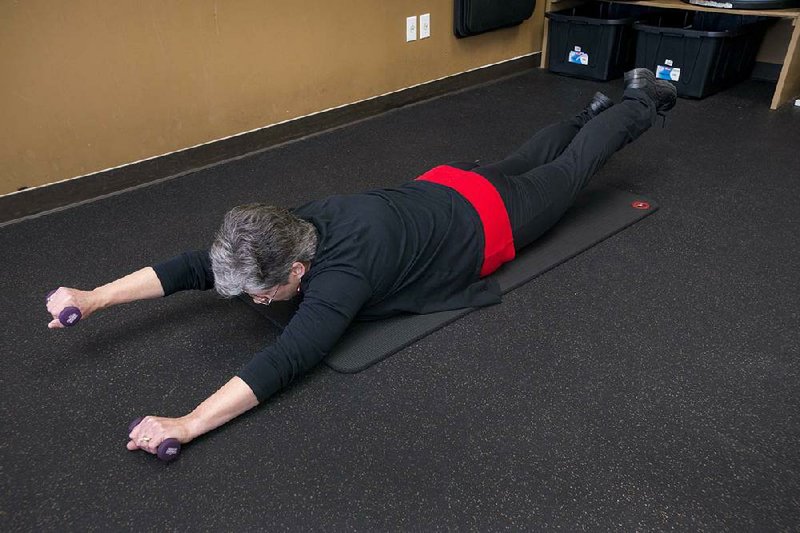LITTLE ROCK — If you’re fresh out of ideas for your 2013 resolution, I’ll share mine with you. Live life more like a salmon (Alaskan to be precise).
I know it’s weird, but stick with me and I think you’ll see my point.
The Alaskan salmon’s life, while simple, is the very definition of resolute.
This week, I’ll draw some comparisons between the salmon’s life and ours. Maybe it’s a little hokey, but what the heck, it’s the first full week of January and everyone’s entitled to a little idealism.
The Alaskan salmon starts life as an egg in a gravel nest on the bottom of a riverbed. After two to three months, it hatches and becomes an alevin. During this four-week period, the salmon feeds off the yolk sac still attached to its body and grows - while remaining in the gravel nest.
These first two stages of the salmon’s life aren’t particularly noteworthy as related to my resolution idea, but I couldn’t really explain my aspiration to live life more like a salmon without first describing how they are born, right?
The salmon moves.
This is where it gets interesting. The salmon loses the yolk sac and becomes a fry, which is the point when it ventures from the nest and begins its journey toward the ocean.
At only 1 or 2 inches in length, the tiny fish is extremely vulnerable to predators and must also find food to survive. The inherent danger in its environment forces the salmon to stay alert, continue moving and constantly search for new sources of sustenance.
If lucky enough to avoid being consumed by an enemy, the salmon spends several months in the fry stage until it’s approximately 6 inches long, when it officially becomes a parr. It spends the next one to three years in this stage, trying to survive without any real defense mechanism. No parent to save it; no poison stinger to ward off predators.
The salmon must scour the river for food and stay alert until it’s developed enough to finish the trek downstream and into the ocean. But the salmon keeps moving.
After a few years, the salmon turns silver and has grown large enough to be categorized as a smolt. This phase of life involves grouping with other salmon and continuing to develop with one another while learning to process saltwater rather than fresh water.
Once it’s ready, the salmon will enter the northern Pacific Ocean, where it can begin its adult life.
HAZARDS OF THE DEEP
The salmon continues to move. All sorts of pitfalls await the adult salmon in the ocean. Seals, whales and commercial fishermen are among its many enemies who will attempt to eat the salmon in its adult state. The salmon must constantly stay alert and aware while using only its evasiveness to survive. For one to four years, the salmon will travel between 2,000 and 3,000 miles throughout the dangerous ocean environment seeking food.
As the salmon nears reproductive maturation, it swims back into the river where it was born - against the current. It stops feeding and has only one goal in mind, to make the arduous trek upstream to spawn.
It will stop at nothing to return to its birthplace, so it lives only off the stored body fat it has accumulated.
This incredible journey of thousands of miles is almost over, but the salmon must reach the finish line to reach its lifelong goal. So the salmon continues to move.
If the salmon is lucky enough to have escaped death as an egg, alevin, fry, parr, smolt and adult, its goal can be realized by fertilizing eggs and guarding them until, all of its energy spent, it gasps its last and floats belly up in the river of its birth.
The salmon’s life is complete, but its life force is regenerated as the cycle then repeats with its offspring in their fertilized egg form.
While many of you know the story of the salmon, it’s a worthwhile and altruistic pursuit to live on the move. At any point along the way, ceasing to move will almost undoubtedly lead to the salmon’s untimely demise, thereby extinguishing any chance of reaching its goal.
So my 2013 resolution is to keep moving and never stop. Physically, mentally, emotionally, financially and spiritually, I aspire to continue to move forward. I hope you’ll do the same.
As a not-so-subtle representation of my 2013 resolution, this week’s exercise is named the Dry Fish and is a great way to keep moving toward your fitness goals.
1.) Select a very light pair of dumbbells (1 or 2 pounds max) and lie on your stomach on an exercise mat.
2.) Position your arms over your head while holding the dumbbells and your legs outstretched.
3.) Turn your palms so they face the floor.
4.) Pick up both hands and both feet a few inches off the floor along with your head.
5.) Now, quickly “flutter” your hands and feet while holding them off the floor.
These are quick 2- to 6-inch movements with the hands and feet moving up and down.
6.) Perform these flutters for 20 seconds at first; as you gain strength over the weeks, flutter longer. But spend some time gaining strength.
The Dry Fish is a fun exercise that will strengthen all the back muscles by improving muscular endurance. Remember, stay on the move and good things will happen. Happy New Year!
Matt Parrott has a doctorate in education (sport studies), a master’s in kinesiology and is certified by the American College of Sports Medicine.
ActiveStyle, Pages 28 on 01/07/2013
